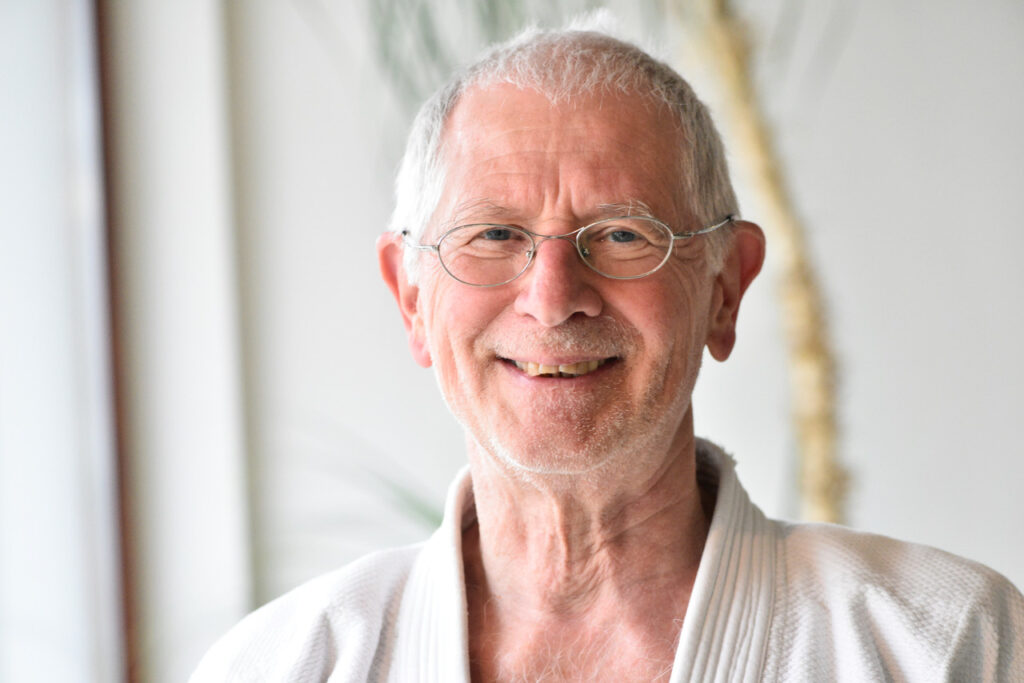Lecturer: Thomas Christaller
Content
Since a few decades human touch became a hot topic in behaviour cognition, brain science, and psychology. Since the antiquity in Greece touch was regarded as the most primitive, animalistic sense in humans far away from the visual sense and its importance for human intelligence. Only Aristotle in one of his texts wrote that touch is the sense which makes us human. Today there is a huge amount of publications about the different roles touch plays in our capabilities to build up reliable social relationships with other humans. In general the appropriate touch helps you to trust others, becoming more self-confident, learning and performing better at school or university as well as performing a task.
In a way the forms of touch used in a fight have the opposite effect. They should hurt and dominate another person up to the point where this person gives in and subdue to the stronger, mightier, more brutal one. The major part of the training in the martial arts concentrate on techniques to control or hurt another person. The smaller part of the training is how to endure pain. The better you are in this the higher your chances are that you can take in punches.
Aikido is a martial art and has many very effective powerful techniques. But important is that you start to harmonize the forces of the other person with yours in a way that the person looses balance and you can finish a proposed attack in a way where nobody is threaten, hurt, dominated. In a way it is stopping the fight before it is overwhelming you.
In this course you will get physical, bodily experiences how to redirect a (simulated) attack into a harmless movement. And which important role touch plays there and your inner posture and emotions to those who are attacking you. We will reflect your experiences on a more scientific level to get step by step a more complete and complex picture of human nature. There is no previous knowledge necessary, neither in the cognitive framework of embodiment nor in martial arts. All experiments are carefully chosen so that physical power or strength doesn’t play a role and therefore you can perform these experiments and expect a lot of fun and no pain 😎
Literature
- Amdur, Ellis. Hidden in Plain Sight. Esoteric Power Training within the Japanese Martial Traditions. Freelance Academy Press, Wheaton (IL), 2018.
- Böhme, Rebecca. Human Touch. Warum körperliche Nähe wichtig ist. C.H. Beck, 2019.
- Linden, David J. Touch: The Science of the Sense that Makes Us Human. Penguin, 2016.
Lecturer

Thomas Christaller was a professor in Artificial Intelligence at the University of Bielefeld and director of the Fraunhofer Institute IAIS until his retirement in 2010. Since then he is a professional teacher for the Japanese martial art Aikido and running a dojo in Bonn (Zentrum für Bewegung & Lebenskunst). During his time as researcher he focused on building artificial systems to figure out what human intelligence is. He started with Natural Language Processing, turning to Knowledge-based Systems, and finally taking mobile robots as means to study embodied cognition.
He started to practice Aikido in 1972, making his first teaching experiences in 1976 at the University of Bielefeld. Over the years he blended his insights in AI about cognition with those he gained in Aikido. He gave Aikido seminars in Russia, USA, England, and Germany invited by diverse groups and organizations. While running a small robotics research lab as a side job in Kitakyushu, Japan, he gave Aikido classes at the campus of Wakamatsu. He has the 6th Dan (“Black Belt”) awarded by the so-called Hombu Dojo of Aikido in Tokyo. Here you can look at some videos to get an idea about his interpretation of Aikido.